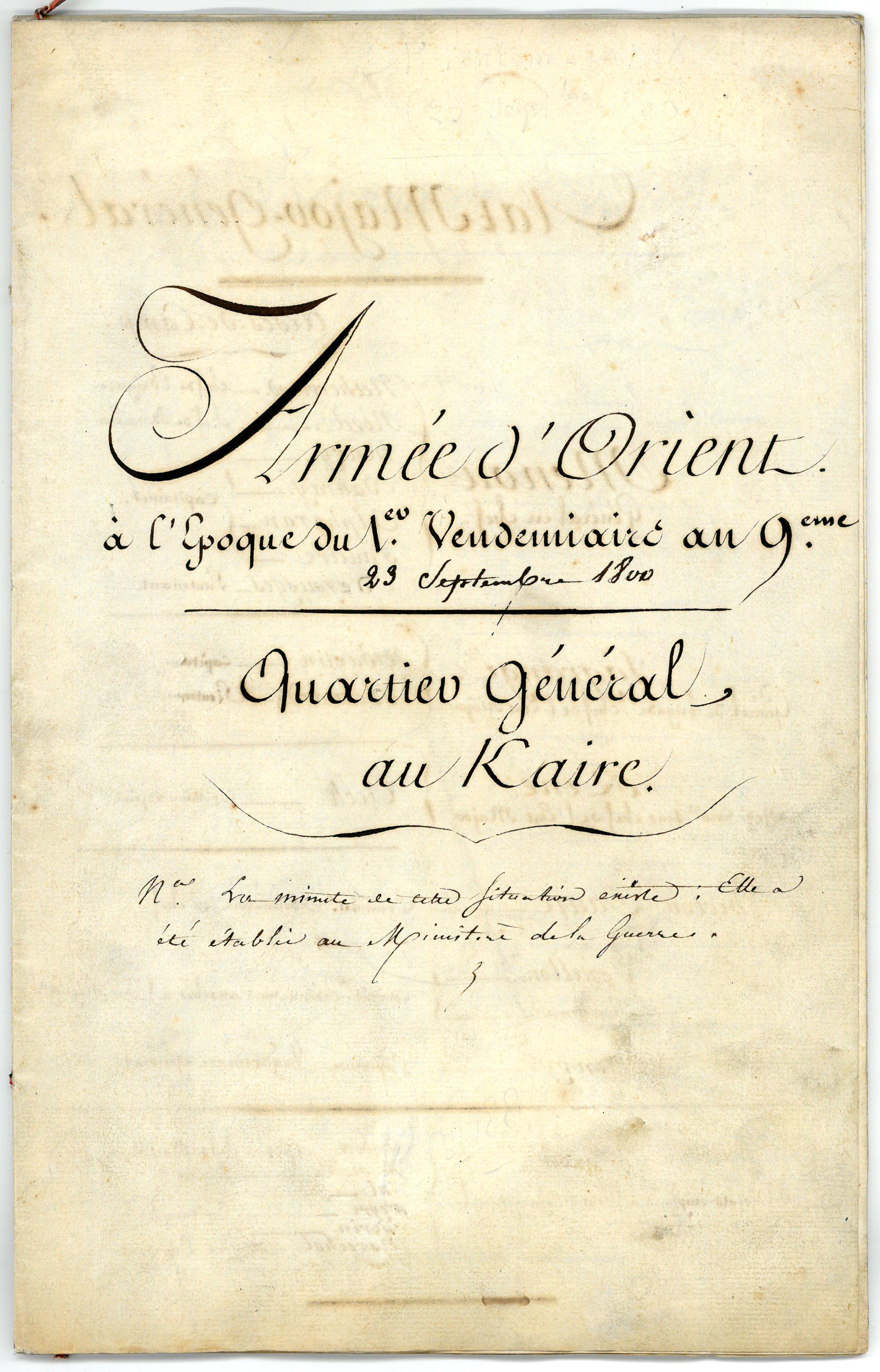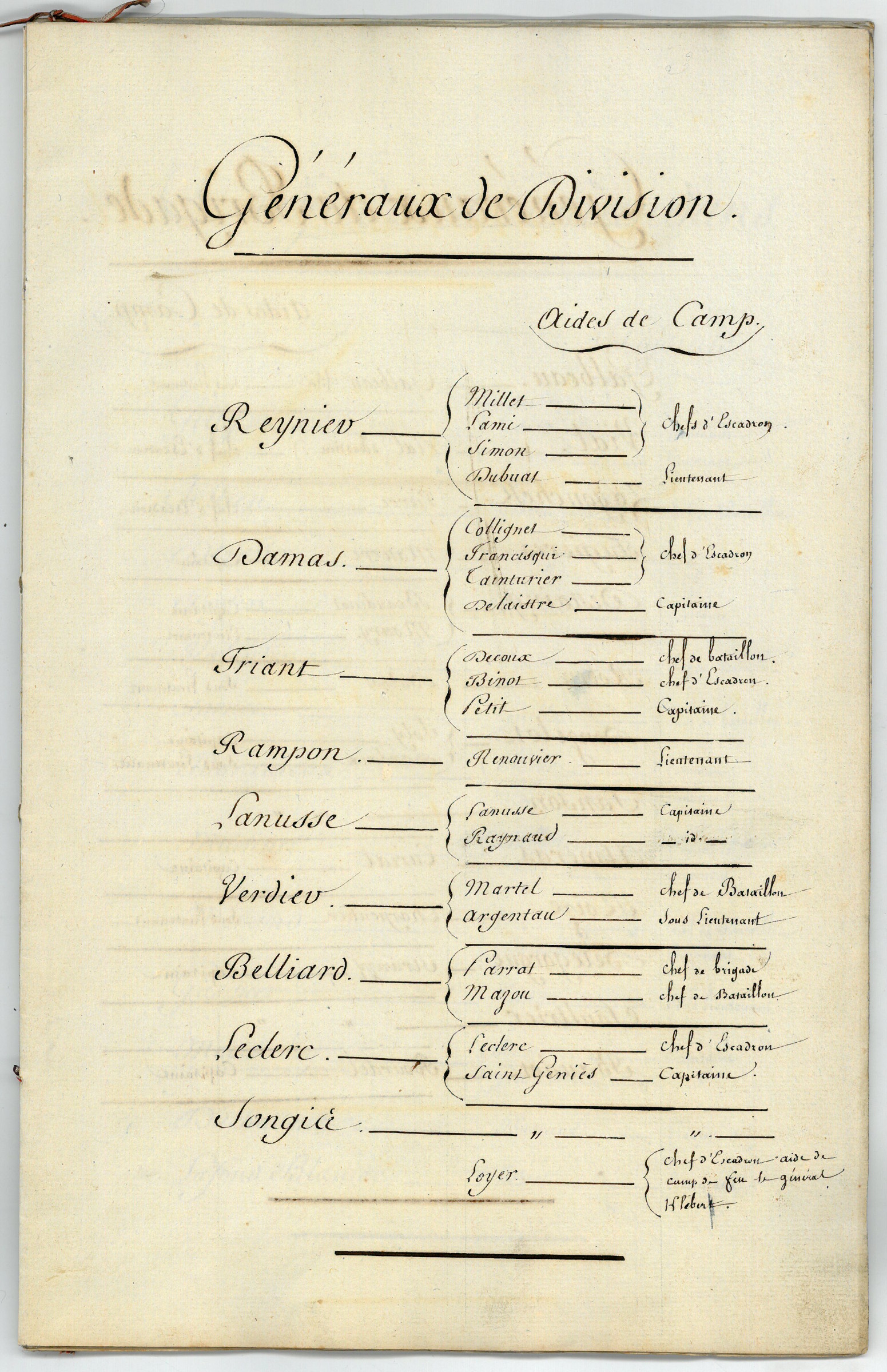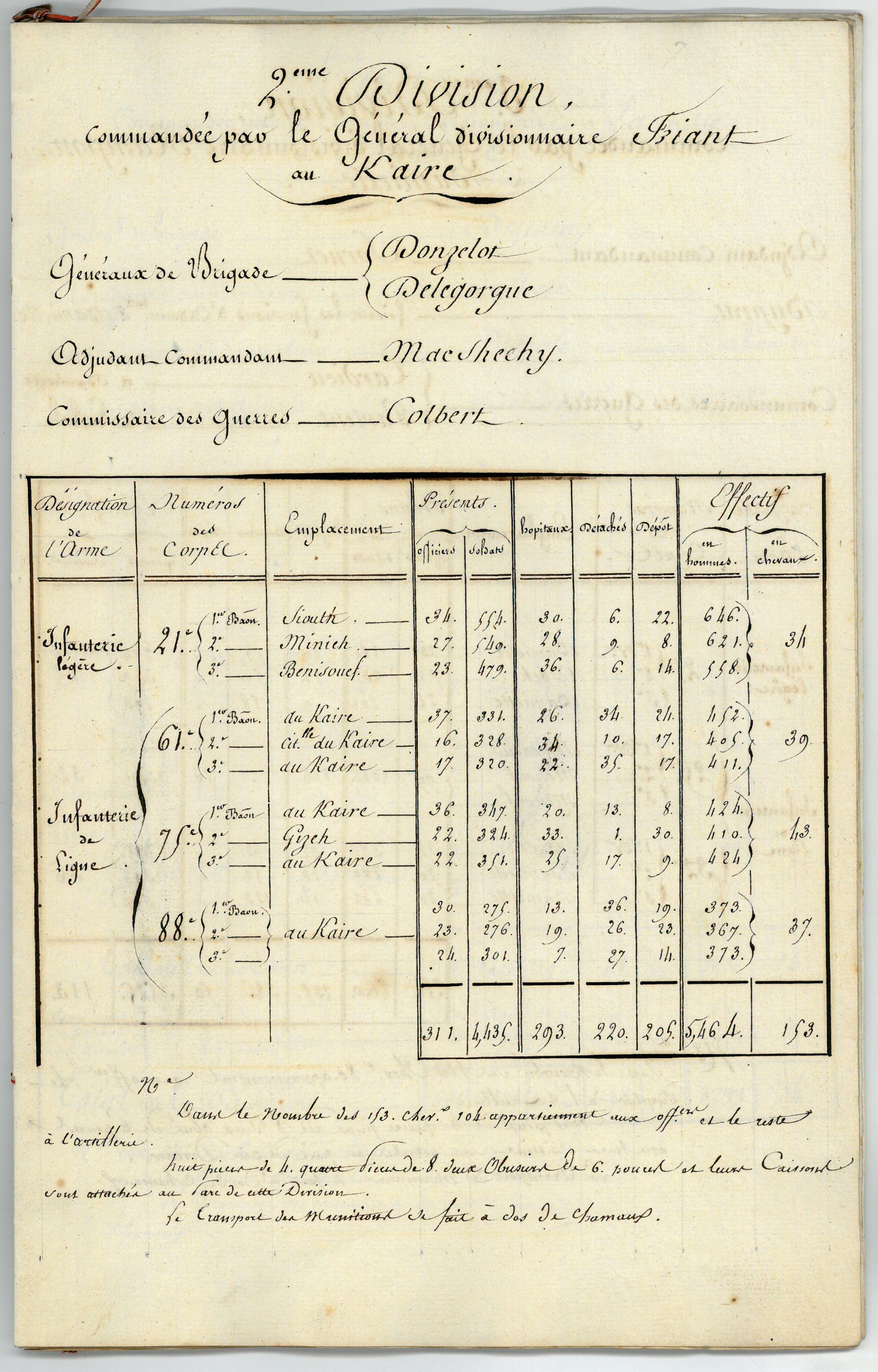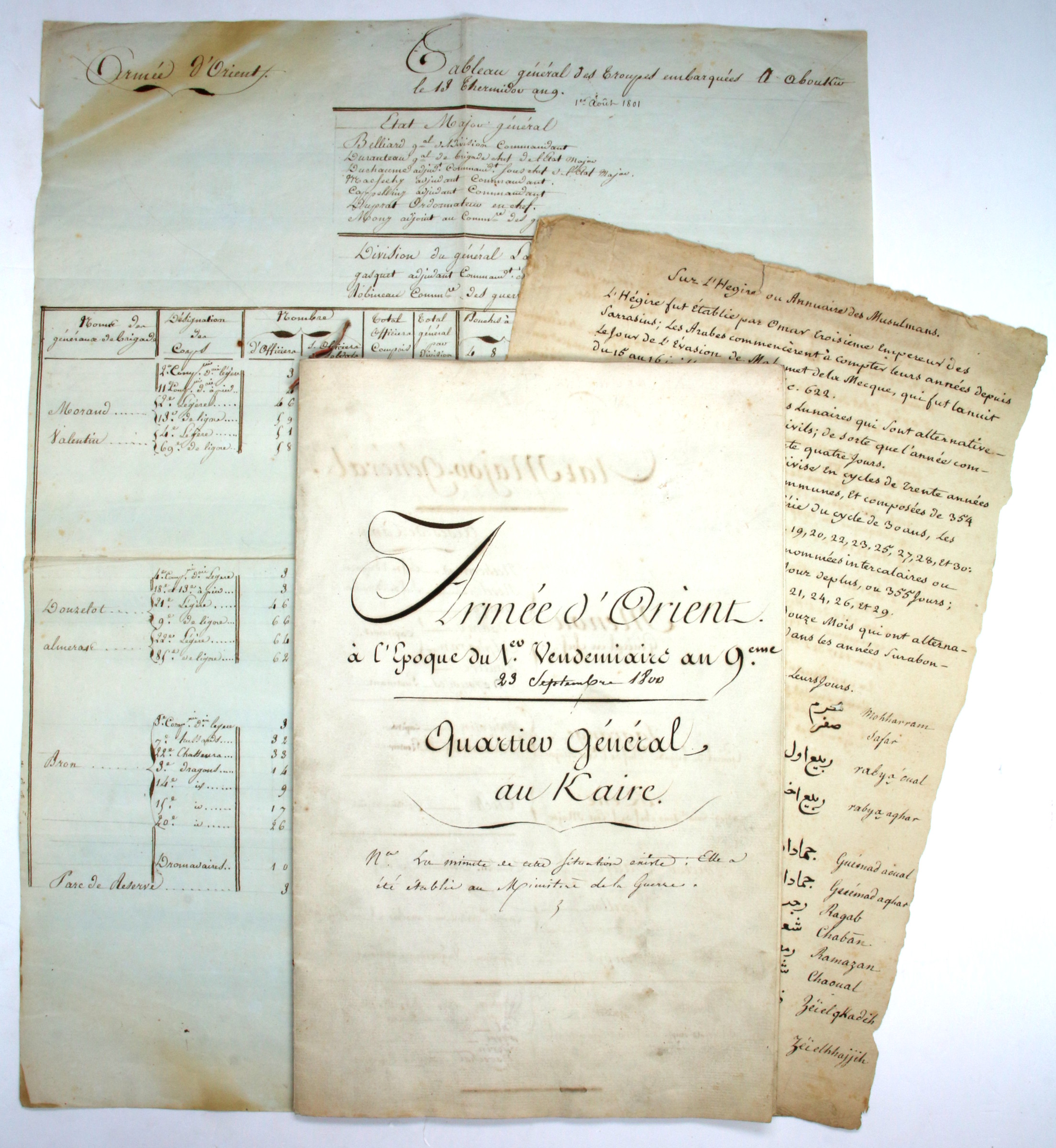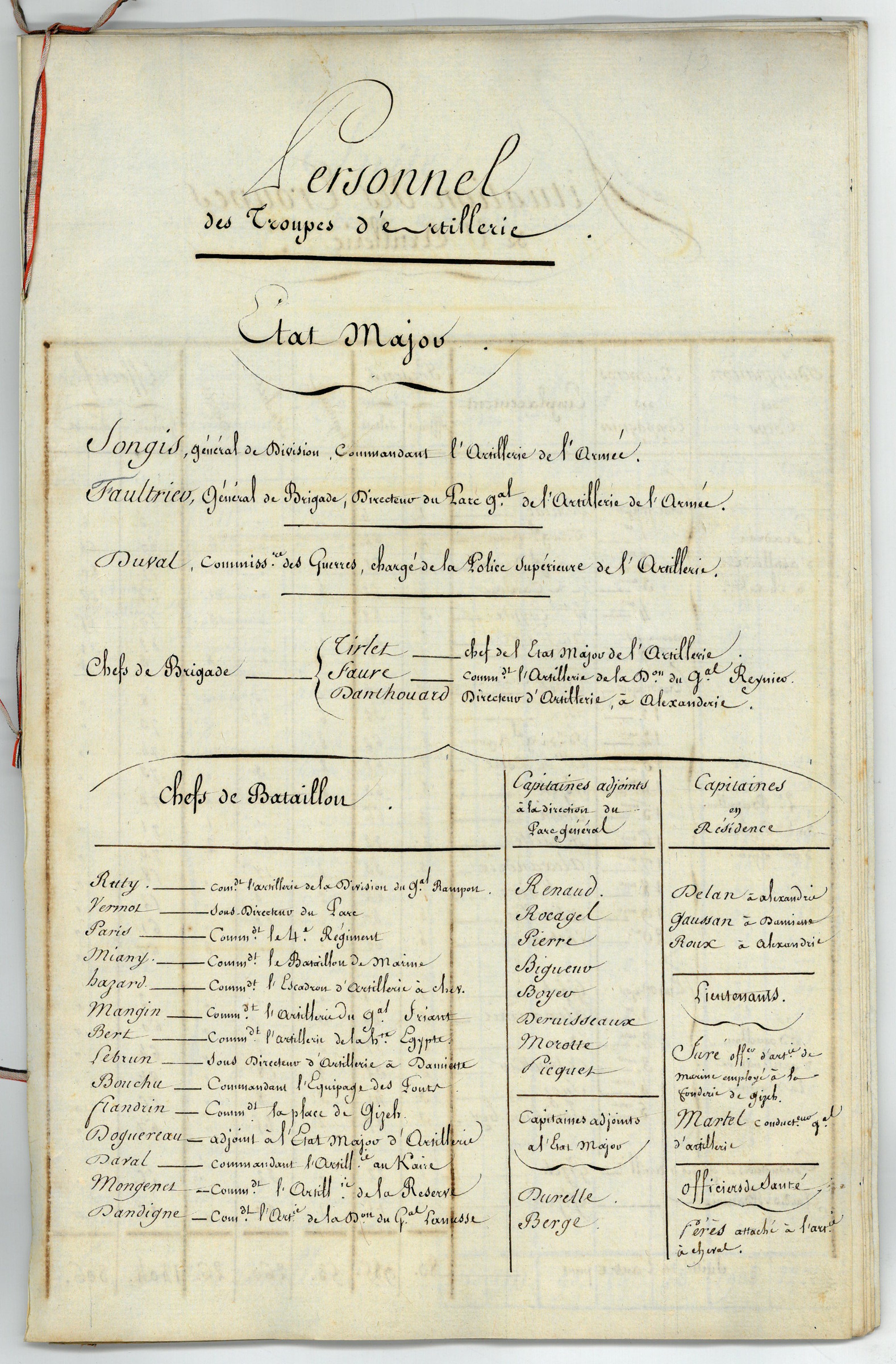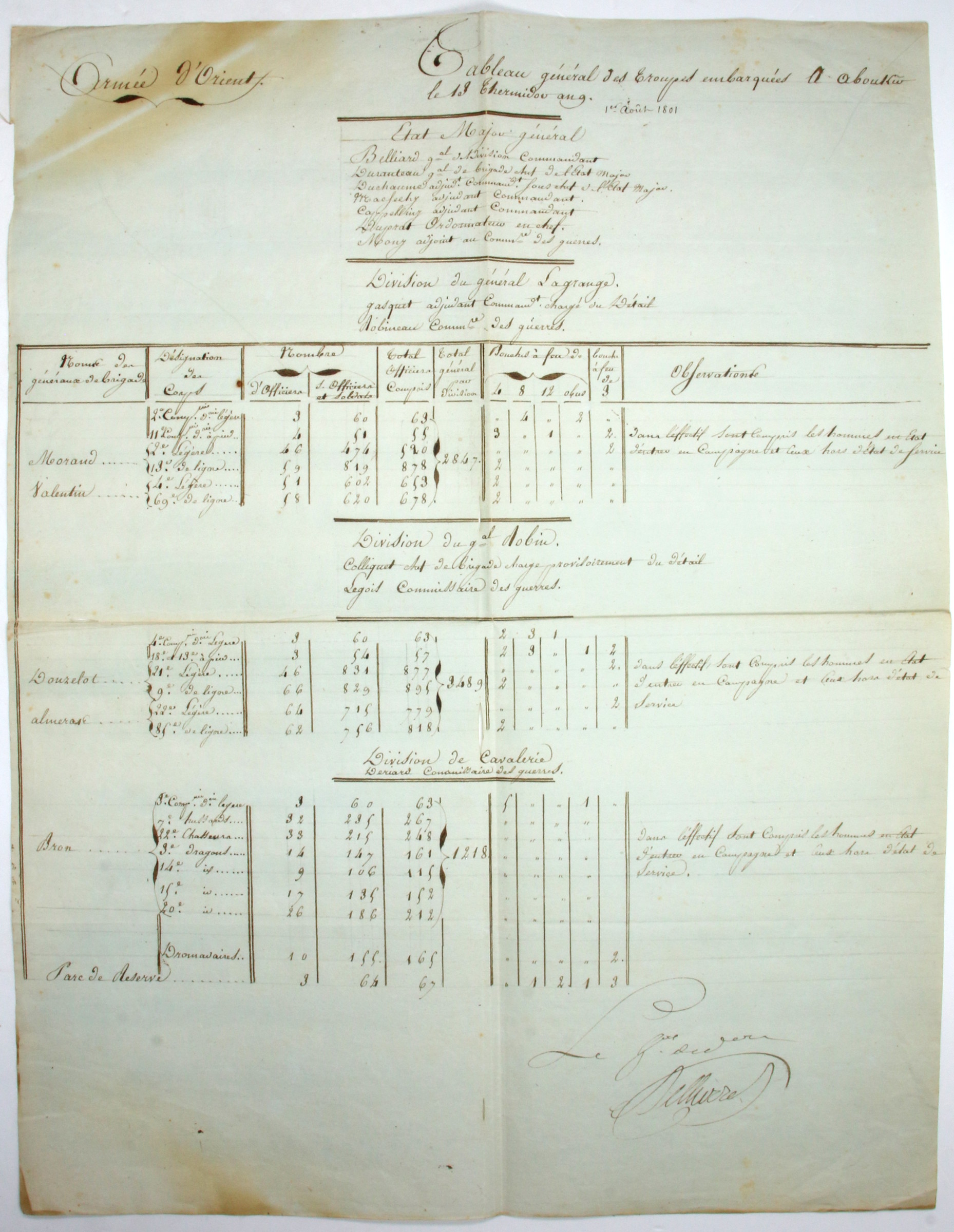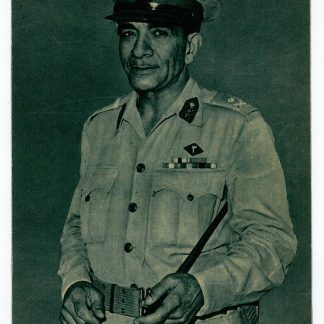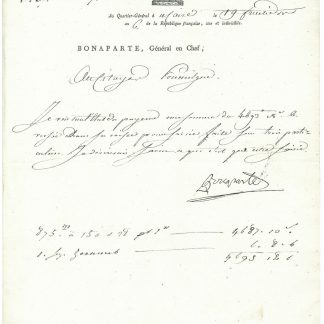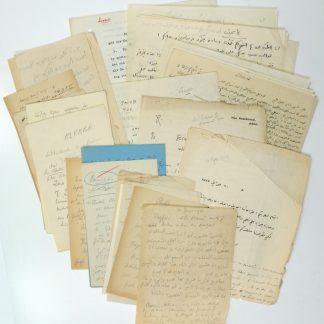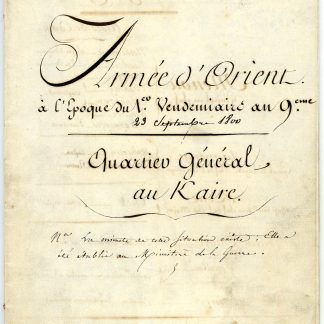Napoleon's Armée d'Orient in 1800
Armée d'Orient à l'époque du 7 Vendémaire an 9eme.
Folio (205 x 320 mm). 22 ff., final blank leaf. French manuscript on paper. Fine clerk's script in black ink on paper with various watermarks. Hand-stitched with a patriotic tricolor ribbon, never bound. With two contemporary addenda.
€ 35,000.00
An internal report on Napoleon's invasion of Ottoman Syria and Egypt, evidently owned and used by a high-ranking officer within Napoleon's Egyptian Army. This original French manuscript compiles crucial military information regarding the structure, casualties, and supply needs of the French Armée d'Orient. It was a war the French Army would lose less than a year later, after which the British - allied with the Ottomans against France in an effort to protect their own colonial interests in the Arabian Peninsula and India - would gain an imperial toehold in Egypt and Syria.
The manuscript was completed for the French District Office of Cairo, and presents a tightly organized, detailed breakdown of the crucial aspects of Napoleon's army and campaign. A subheading on the title-page reads: "La minute de cette situation existe; Elle a été établie au Ministère de la Guerre". This is, therefore, presumably a contemporary copy prepared in the Cairo District Office ("Quartier Général au Kaire"). The manuscript opens with an overview of the command structure of the Army, starting with General Jacques-François de Menou (later Abdullah Menou, 1750-1810), head of the Egyptian Campaign after the assassination of Kléber, and a convert to Islam.
Following the famous names is all that makes an Army move: how many horses each division has, and how many are assigned to artillery units or officers, who has enough gunpowder and who does not, and requests for siege artillery. Horses also feature on the casualty lists, which for soldiers and officers are organized by hospital and rank. Longer notes defend the reasoning behind supply and munitions requests: "Le Siège d'Aboukir, le blocus de Kaire, et l'expédition de Syrie tous voir qu'il est indispensible d'avoir un Equipage de Siège".
In fact, most military aims are towards siege warfare, providing a fascinating glimpse into the invasion of the Ottoman Empire which, with hindsight, was failing by the autumn of 1800. Soon, the generals who were proudly listed in the command structure would be facing the end: before the next Vendémaire, Belliard would surrender Cairo, and Menou would surrender Alexandria, thus ending the war.
Faint offsetting, a few minor smudges. Remarkably well preserved.
Includes two further handwritten leaves: a general table of the French troops embarked at Aboukir on 13 Thermidor an 9 (1 August 1801: handwritten document signed by general Augustin Daniel Belliard 1769-1832, 36 x 47 cm), and a short useful guideline titled "Sur l'histoire ou Annuaire des musulmans" (double-sided ms. sheet, 23 x 35 cm, ca. 1802), with notes on the conversions of Hijri and Gregorian dates.

